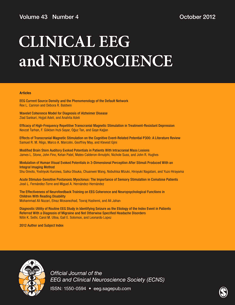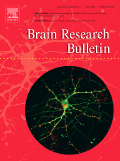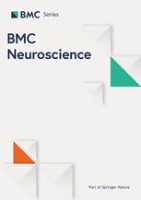
NeuroSci
Scope & Guideline
Transforming Neuroscience with Accessible Research
Introduction
Aims and Scopes
- Neurodevelopmental Disorders:
Research focusing on the mechanisms underlying neurodevelopmental disorders such as autism, ADHD, and cerebral palsy, including genetic, epigenetic, and environmental influences. - Neonatal Brain Injury:
Studies addressing the causes, consequences, and therapeutic interventions for neonatal brain injuries, particularly hypoxic-ischemic events, and their long-term effects on cognitive and behavioral outcomes. - Neuroinflammation and Neuroprotection:
Investigation of the roles of inflammation and neuroprotective strategies in various neurological conditions, emphasizing the molecular pathways involved in injury response and recovery. - Translational Research:
Emphasis on translating basic research findings into clinical applications, particularly in pediatric populations, to improve diagnostic and therapeutic strategies for neurological disorders. - Advanced Imaging and Biomarkers:
Utilization of cutting-edge imaging techniques and biomarker discovery to better understand brain structure and function across different developmental stages.
Trending and Emerging
- Epigenetics in Neurodevelopment:
An increasing number of studies are focusing on epigenetic modifications and their impact on neurodevelopmental processes, highlighting the importance of environmental factors in shaping brain development. - Neuroprotective Strategies and Therapeutics:
There is a growing interest in exploring neuroprotective agents and strategies that can mitigate damage from neonatal brain injuries and other neurodevelopmental disorders. - Impact of Maternal Environment on Offspring Development:
Research is increasingly examining how maternal health, stress, and environmental exposures during pregnancy affect neurodevelopmental outcomes in offspring, emphasizing the need for a holistic understanding of brain development. - Neural Circuitry and Connectivity:
Emerging studies are delving into the complexities of neural circuitry and connectivity patterns, particularly in relation to cognitive functions and developmental disorders. - Machine Learning in Neurodevelopmental Research:
The application of machine learning and artificial intelligence techniques to analyze neurodevelopmental data is on the rise, offering new insights into patterns and predictors of neurological outcomes.
Declining or Waning
- Traditional Neuroanatomy:
Research centered on classical neuroanatomical studies appears to be waning, as contemporary investigations increasingly incorporate advanced imaging techniques and molecular approaches. - Pharmacological Approaches for Neurodevelopmental Disorders:
While pharmacological studies remain relevant, there seems to be a decline in the focus on traditional drug therapies, with a shift toward exploring genetic and epigenetic interventions. - Animal Models of Neurological Diseases:
The reliance on conventional animal models for studying neurological diseases is decreasing, as researchers seek more relevant models that better mimic human conditions, including organoid systems and advanced in vitro methods.
Similar Journals

NEUROREPORT
Unraveling the complexities of the nervous system.NEUROREPORT is a distinguished journal in the field of neuroscience, published by Lippincott Williams & Wilkins. With an ISSN of 0959-4965 and an E-ISSN of 1473-558X, the journal has established itself as a vital platform for disseminating innovative research and developments in the dynamic area of neuroscience since its inception in 1990. Currently, it is positioned in the Q3 category of the 2023 Journal Rankings, reflecting its respectable standing within the community of neuroscience professionals, ranked #74 out of 113 in general neuroscience on Scopus, placing it in the 34th percentile. While it operates on a traditional subscription model, NEUROREPORT is committed to fostering knowledge sharing in the realm of neurobiology, neuropharmacology, and cognitive studies among researchers, professionals, and students alike. With its broad scope and commitment to scientific excellence, the journal continues to be a cornerstone for those seeking to stay ahead in the evolving landscape of neurological research.

Journal of Integrative Neuroscience
Advancing Neuroscience Through Interdisciplinary InnovationWelcome to the Journal of Integrative Neuroscience, a prominent platform dedicated to advancing the field of neuroscience by fostering interdisciplinary research and innovation. Published by IMR PRESS, this open-access journal has been committed to disseminating high-quality research since its inception in 2002, with a vision to integrate various aspects of neuroscience, from theoretical foundations to applied methodologies, ultimately enhancing our understanding of the brain and nervous system. With an evolving presence in the academic community, the journal holds significant rankings, such as Q2 in Medicine and Q3 in Neuroscience for 2023, reflecting its growing impact and value to researchers and professionals alike. The journal is accessible globally, having adopted an open-access model in 2018, ensuring that vital neuroscience findings reach a broader audience without barriers. Positioned in Singapore and serving an international readership, the Journal of Integrative Neuroscience is your essential resource for the latest insights and discoveries in a rapidly evolving field.

CLINICAL EEG AND NEUROSCIENCE
Transforming Clinical Understanding with Cutting-Edge ResearchCLINICAL EEG AND NEUROSCIENCE, published by SAGE Publications Inc, stands as a pivotal journal in the fields of neurology and neuroscience, with a focus on the latest research and advancements in clinical electroencephalography and neurophysiology. Since its inception in 1970, the journal has provided a platform for rigorous scholarly work, offering valuable insights into neurological disorders and EEG technology. With its current categorization in the Q2 and Q3 quartiles across various subfields of medicine and neurology, it ranks prominently in the Scopus database, emphasizing its significance in academic discourse. The journal's commitment to disseminating high-quality research is underscored by its open access options, facilitating broader accessibility to its published findings. For researchers, clinicians, and students alike, CLINICAL EEG AND NEUROSCIENCE remains an essential resource for keeping abreast of the evolving landscape of neurological studies.

NEUROIMAGE
Transforming Neuroscience with Cutting-Edge ResearchNEUROIMAGE, published by Academic Press Inc Elsevier Science, is a leading international journal dedicated to advancing the fields of cognitive neuroscience and neurology. With an impressive impact factor that places it in the Q1 category for both disciplines, NEUROIMAGE stands at the forefront of disseminating high-quality research that employs advanced imaging methods to elucidate the workings of the human brain. As a pivotal platform since its inception in 1992, this journal has continued to thrive, embracing Open Access publishing since 2020 to ensure wider dissemination and accessibility of cutting-edge findings. With a Scopus rank of 7th in cognitive neuroscience and 13th in neurology, and situated in the 94th and 93rd percentiles respectively, NEUROIMAGE serves as an invaluable resource for researchers, professionals, and students alike seeking to explore the intricate relationships between brain structure and function. For more information, please visit their office at 525 B ST, STE 1900, SAN DIEGO, CA 92101-4495.

JOURNAL OF CHEMICAL NEUROANATOMY
Unraveling the Molecular Mysteries of NeuroanatomyJOURNAL OF CHEMICAL NEUROANATOMY, published by Elsevier, focuses on the intersection of neuroscience and chemical processes, making it an essential resource for researchers and professionals in the field. With a commitment to advancing the understanding of the cellular and molecular underpinnings of neuroanatomy, this journal has provided a platform for innovative research since its inception in 1988, with its current dissemination period extending through 2024. Operating from the Netherlands, it has earned its place in the Q3 category of cellular and molecular neuroscience as per the 2023 assessments. While it currently does not offer Open Access options, the journal remains a valuable asset in disseminating cutting-edge studies that explore the complexity of the nervous system. With its ISSN 0891-0618 and E-ISSN 1873-6300, the journal serves a diverse audience, including researchers, clinicians, and students, fostering collaboration and innovation in the ever-evolving field of neuroanatomy.

GENES BRAIN AND BEHAVIOR
Unraveling the Genetic Threads of NeuroscienceGENES BRAIN AND BEHAVIOR is a leading journal published by Wiley that focuses on the intricate interplay between genetic factors and behavioral neuroscience. With a robust ISSN of 1601-1848 and an E-ISSN of 1601-183X, this journal serves as a premier platform for innovative research that spans across multiple fields including genetics, neurology, and behavioral neuroscience. Recognized for its significant impact with a 2023 categorization of Q1 in Behavioral Neuroscience and Q2 in both Genetics and Neurology, GENES BRAIN AND BEHAVIOR asserts itself as an influential resource for scholars, practitioners, and students alike, facilitating the advancement of knowledge in these dynamic areas. Its Scopus rankings underscore its prominence—ranking #18 in Behavioral Neuroscience and #45 in Neurology, placing it in the top percentiles among its peers. Although not an open-access journal, the rigorous peer-review process ensures high-quality publications, pivotal for those pursuing cutting-edge research and applications. With a history of convergence from 2002 to 2024, this journal continues to foster academic dialogue and discovery in the ever-evolving landscape of brain and behavioral studies.

BRAIN RESEARCH BULLETIN
Bridging disciplines to enhance neuroscience knowledge.BRAIN RESEARCH BULLETIN is a leading academic journal published by PERGAMON-ELSEVIER SCIENCE LTD, dedicated to the dissemination of high-quality research in the interdisciplinary field of neuroscience. Since its inception in 1976, this journal has served as a vital platform for researchers, professionals, and students interested in a broad spectrum of topics within neuroscience, making significant contributions to the understanding of brain function and its associated disorders. With a commendable impact factor and a current Scopus rank of #35 out of 113 in general neuroscience, the journal holds a Q2 quartile ranking, underscoring its relevance and influence in the academic community. BRAIN RESEARCH BULLETIN invites submissions of original articles, reviews, and brief communications, enhancing scholarly communication within this dynamic field. Although the journal is not open access, it ensures widespread reach and impact through various subscription models, allowing access to pivotal findings that pave the way for future research advancements. For researchers aiming to share impactful discoveries and insights within the neuroscience community, BRAIN RESEARCH BULLETIN remains an essential outlet.

BMC NEUROSCIENCE
Empowering Minds with Accessible Neuroscience InsightsBMC NEUROSCIENCE is a prominent open access journal dedicated to the dissemination of high-quality research within the dynamic and rapidly evolving field of neuroscience. Published by BMC, a well-respected leader in open access publishing, this journal facilitates the free exchange of knowledge since its inception in 2000. With the ISSN 1471-2202, BMC NEUROSCIENCE aims to address the diverse interests of the neuroscience community by covering a broad spectrum of topics, ranging from cellular and molecular neuroscience to general neurological studies, thus appealing to researchers, professionals, and students alike. Although it currently holds a Q4 ranking in Cellular and Molecular Neuroscience and a Q3 rank in miscellaneous Neuroscience categories, its commitment to advancing the understanding of brain function and disorders remains steadfast. The journal features a user-friendly Open Access model, ensuring that critical research findings are readily accessible to everyone, fostering collaboration and innovation in the field. As the journal continues to evolve towards its convergence years of 2024, it aspires to enhance its impact and global reach, making it a valuable resource for anyone interested in advancing neuroscience research.

NEUROSCIENCE
Transforming ideas into impactful neuroscience research.NEUROSCIENCE, published by PERGAMON-ELSEVIER SCIENCE LTD, has established itself as a reputable journal in the field of neuroscience since its inception in 1976, continuing its contributions through 2024. With a Category Quartile ranking of Q2 in Neuroscience (miscellaneous) and a Scopus Rank of #41 out of 113, this journal represents a critical platform for the dissemination of innovative research and insights. Although it currently does not offer open access options, NEUROSCIENCE aims to advance our understanding of the nervous system by publishing high-quality original research, reviews, and methodological articles, thereby engaging a comprehensive audience of researchers, professionals, and students alike. With an impact factor that reflects its significance in the scientific community, this journal remains a go-to source for cutting-edge discoveries and scholarly discussions in the dynamic field of neuroscience.

NATURE NEUROSCIENCE
Leading the Way in Cutting-Edge Neuroscience ResearchNATURE NEUROSCIENCE is a premier journal published by NATURE PORTFOLIO, focusing on cutting-edge research in the field of neuroscience. With an esteemed impact factor that reflects its significance in the academic community, this journal occupies an exceptional place in the 2023 Q1 category for neuroscience (miscellaneous) and boasts a leading Scopus rank of #1 out of 113 in general neuroscience, placing it within the top 1st percentile. Since its inception in 1998, NATURE NEUROSCIENCE has consistently delivered high-quality, peer-reviewed articles that contribute to our understanding of the nervous system, driving innovation and scholarship across disciplines. Although it does not offer open access, the journal remains a vital resource for researchers, professionals, and students seeking to stay at the forefront of neuroscientific discovery and discussion. Its editorial commitment to excellence ensures that it continually shapes the trajectory of neuroscience research well into 2024 and beyond, making it an indispensable asset for anyone passionate about the brain and its complexities.